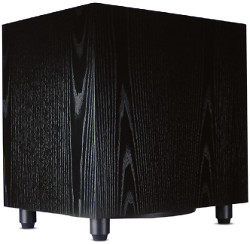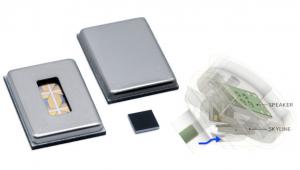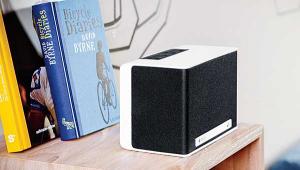Great article. Good to hear from the experts about sub design and setup.
Subwoofers: The Guts and the Glory

Subwoofer design has undergone a revolution. No, the physics of woofers, amplifiers, and enclosures haven’t changed. But new technologies have made it possible to push the bass-ic laws of nature to their limits, such that the best of today’s inexpensive subwoofers can outperform many of the top models from 15 or 20 years ago.
Affordable digital audio processing lets designers tune subwoofers in ways the engineers of the 1990s could only have imagined. High-efficiency amplifiers pound out powerful bass from boxes hardly bigger than a basketball. New speaker drivers use high-tech materials to produce sound levels that would have pushed older models way past the breaking point.
Since things are so different now, we thought this would be a great time to revisit some of the fundamentals of subwoofer design and examine how the old rules might have changed in the digital age.
Of course, we have some insight into this at Sound & Vision, having tested many of today’s best subwoofers. But we can’t observe how all these new technological twists affect a designer’s day-to-day decisions. So I consulted a handful of the hundred or so people on Earth who possess this in-depth knowledge.
The experts I talked with were Andrew Welker, R&D director for Axiom; Dr. Poh Hsu, founder of Hsu Research; Tom Vodhanel, president of Power Sound Audio; Ed Mullen, director of technology and customer relations for SVS; and Chris Hagen, acoustic system development engineer for Velodyne.
In the interest of brevity, our experts’ comments are heavily edited here. The full text of the interviews can be found here.
OK, time to go deep—literally and figuratively.
Sealed, Ported, or Passive?
To kick off my conversations with the experts, I decided to revisit the defining characteristic of a subwoofer’s design: whether the enclosure is sealed or ported and whether it uses any passive radiators. A ported (vented, or bass reflex) box has one or more ports, tuned with tubes that usually run into the enclosure. A passive radiator replaces the port with what is, in essence, a large woofer with just a suspended diaphragm and no voice coil connected to the amplifier or magnet. There are other types of subs,
but they’re rarely used in home theaters.

These acoustical alignments determine the way the natural bass response of a subwoofer decreases below the inherent resonant frequency of the enclosure/driver system. With sealed-box subwoofers, this rate is generally –12 decibels per octave. With subs that use a port or a passive radiator, the rate is steeper, usually –24 dB per octave. But a sub with a port or passive radiator will typically deliver deeper bass extension and more output from the same amp power.
Why choose one or another? “A bass-reflex sub typically has much higher maximum output at the deepest frequencies than a smaller, sealed sub at the same price point,” said SVS’s Mullen. However, he also pointed out that a sub with super-deep bass extension may overwhelm a smaller room. This is because of a function called room gain, in which the natural acoustics of a room reinforce a sub’s low bass output. As Mullen explained, “a sealed sub can work better in a small room because its rolloff characteristics are often a better match for the room gain.”
Power Sound Audio’s Vodhanel agrees. “Under 3,000 cubic feet of effective room Volume—including the room space it’s open to—a sealed enclosure may be all you need. From 3,000 to 5,000 cubic feet, you can go either way. Above 5,000, we lean toward larger ported models—or, if the budget is there, our new Triax sealed model, which has three 15-inch drivers.”
For Velodyne’s Hagen, it’s often a matter of price. “If the subwoofer needs to be cost effective and doesn’t have much power, then you lean toward having assistance devices like a port or a passive radiator,” he said. “If cost is no object, it’s typically better to get a less steep rolloff using a sealed box, then throw a lot of power at it to get deeper bass extension.” In their higher-end subs, Hsu and SVS include foam plugs and switchable equalization so the customer can choose to use the sub sealed, with one port open, or with two ports open.

All of these experts feel that passive radiators have their place—mainly in smaller subs—but none is enthusiastic about them. “The advantage is that you don’t have port noise,” Hsu noted, “and when you have a very small cabinet, the passive radiator is the easiest way to get good low-frequency response. You probably don’t have enough room for a port tube, and you’d get too much port noise anyway. But for a passive radiator to be tuned for low-frequency output from a small cabinet, you need a really heavy diaphragm and very high excursion, so you could have a reliability problem.”
Delays, Delays, Delays
Another difference between sealed subwoofers and ported or passive-radiator models is in phase response. As a simple explanation, an open-back woofer cone radiates backwave energy that effectively cancels out what’s coming off the front of the driver; it is said to
be in “reverse phase.” With a sealed enclosure, this energy is discarded—it does no work but is also not allowed into the room where it could destructively cancel bass energy from the front. In a bass-reflex enclosure, the port or passive radiator delays the backwave energy just long enough so that its effect is additive instead of destructive. But, since there are no free lunches, this added delay results in some sacrifice of performance in the time domain, which may affect our perception of how “tight” the bass sounds, among other things.
- Log in or register to post comments


We offer assistance in all subjects. Start relying on our best essay here services today!






















































